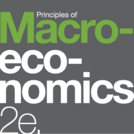
This page from the Federal Reserve Bank of Kansas gives general information about the bank and what it does.
- Subject:
- Financial Literacy
- Social Studies
- Material Type:
- Reading
- Date Added:
- 12/01/2023

This page from the Federal Reserve Bank of Kansas gives general information about the bank and what it does.

The Minneapolis branch of the Federal Reserve Bank system. It has a wealth of financial information and data, information about the banking system and the state of the economy, and financial education resources.

Principles of Macroeconomics 2e covers the scope and sequence of most introductory economics courses. The text includes many current examples, which are handled in a politically equitable way. The outcome is a balanced approach to the theory and application of economics concepts. The second edition has been thoroughly revised to increase clarity, update data and current event impacts, and incorporate the feedback from many reviewers and adopters. Changes made in Principles of Macroeconomics 2e are described in the preface and the transition guide to help instructors transition to the second edition. The first edition of Principles of Macroeconomics by OpenStax is available in web view here.


By the end of this section, you will be able to:
Differentiate among a floating exchange rate, a soft peg, a hard peg, and a merged currency
Identify the tradeoffs that come with a floating exchange rate, a soft peg, a hard peg, and a merged currency


By the end of this section you will be able to:
Explain how exchange rate shifting influences aggregate demand and supply
Explain how shifting exchange rates also can influence loans and banks


By the end of this section, you will be able to:
Analyze whether monetary policy decisions should be made more democratically
Calculate the velocity of money
Evaluate the central bank’s influence on inflation, unemployment, asset bubbles, and leverage cycles
Calculate the effects of monetary stimulus

By the end of this section, you will be able to:
Explain the structure and organization of the U.S. Federal Reserve
Discuss how central banks impact monetary policy, promote financial stability, and provide banking services